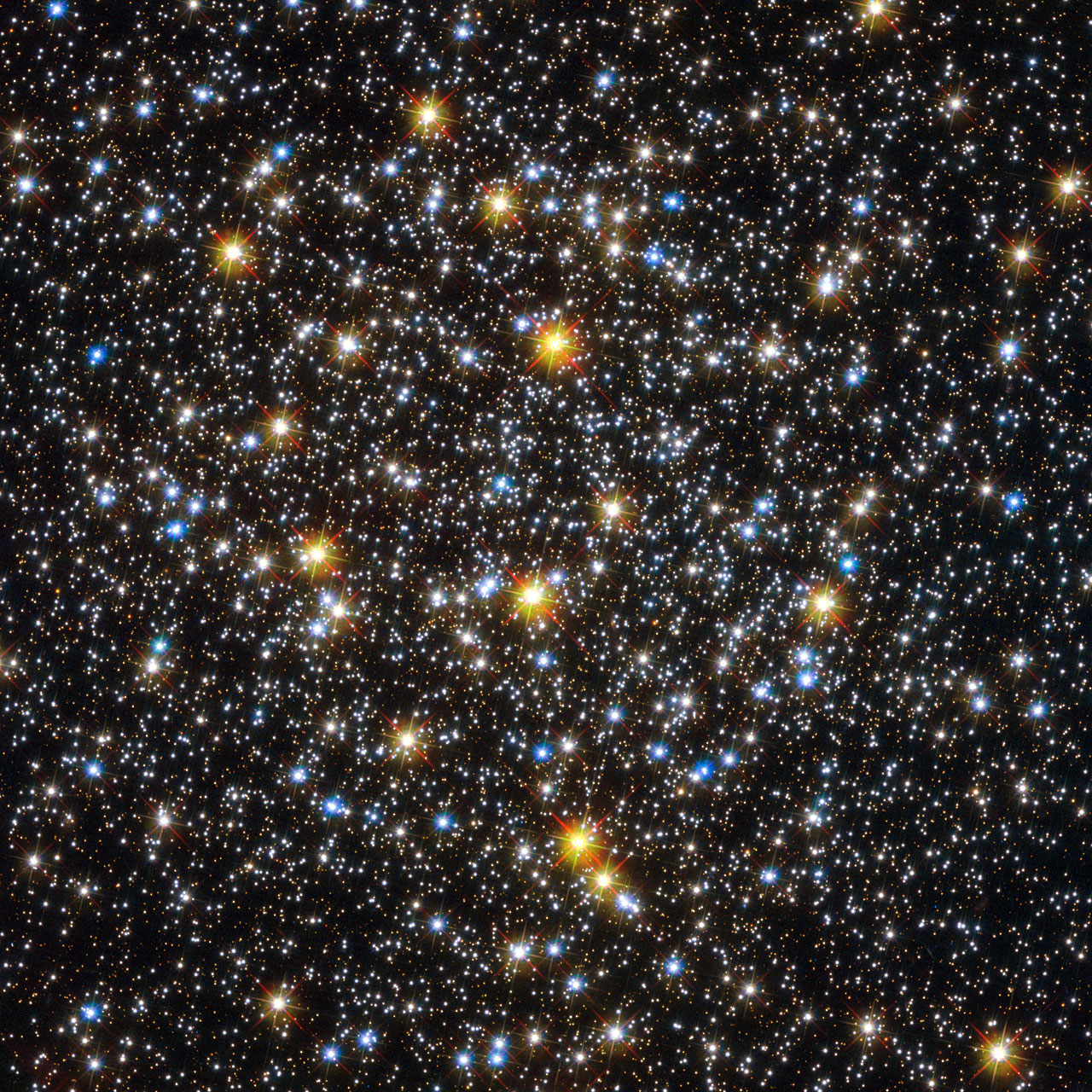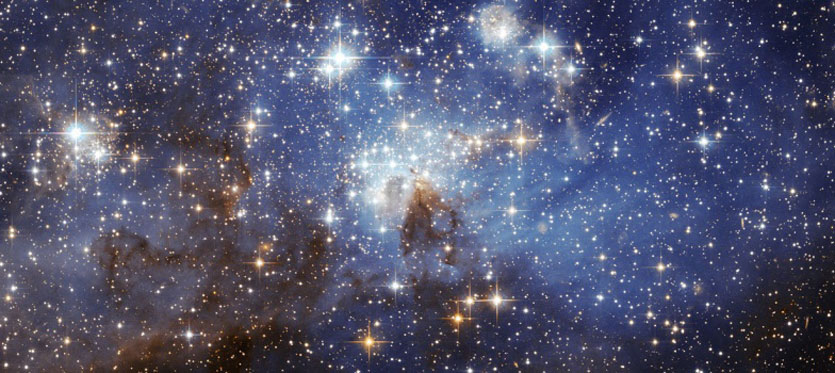- How do astronomers estimate how many stars exist?
- How many stars are there in the universe?
- What is a guess that is too low?
- What is a guess that is too high?
- What is your best guess?
- Can we see every star in the universe from Earth?
- What other strategies can we use to estimate the number of stars in the universe?
- How many stars are there in our solar system?
The first challenge question helps to set up how we are going to estimate how many stars exist in the universe. When you ask students this question, they may begin by stating that they would count all the stars they could see in the sky. We realize that it is not a realistic strategy but at this point students may or may not. So, below is an image of stars in space that you can give students to show the challenge this poses. Hopefully students will realize counting stars individually is a futile process, however if students actually attempt to count the stars, you can redirect them by asking “Can we see every star in the universe from Earth?”, “Does this picture show every star in space?”, and “What other strategies can we use to estimate the number of stars in the universe?”

Students may need an astronomy refresher. Earth is a part of a solar system with one star, the Sun. The Sun is one of many stars in our galaxy, the Milky Way. The Milky Way is one of many galaxies in the universe. Eventually we want them to get to a place where they realize that if we know estimates for the number of stars in our galaxy and how many galaxies there are in the universe, we can multiply them together to get a very rough estimate.
When they want to know about how many stars there are in a galaxy and how many galaxies there are in the universe, show them this video:
The man states that, “There are around 100 billion stars in our galaxy. And it’s thought that the universe holds up to 400 billion galaxies. Multiplying these together suggests that space holds over BEEP stars.” This is where the fun begins. Hopefully students will be driven to figure out how many stars the man said. Do not help them at all because it is from the struggle that they will crave more practical ways to say the numbers and more efficient ways to multiply them.
First, writing the numbers may even be a challenge for the students. You will have 100,000,000,000 * 400,000,000,000. Anyone who uses the traditional multiplication algorithm is going to be busy for a long while. What you are looking for are students who think they’ve cracked the code and figured out a short cut for doing the math. They will likely be mathematically imprecise and state something similar to: “I multiplied 4 times 1 and then added 22 zeros at the end.” However, they are developing the foundation for operations using scientific notation (CCSS 8.EE.4), and this is a very useful context as you develop their procedural skill and fluency. Later you should build upon this “short cut” and use it to show how they are essentially describing how to multiply two numbers in scientific notation.
There is still more fun to be had. The estimate for the number of stars in the universe, written in decimal notation, is 40,000,000,000,000,000,000,000. That is more than 40 billion, 40 trillion, or 40 quadrillion. Apparently it is 40 sextillion. I am sure a bunch of middle school boys and girls will be very mature about stating that number. Thankfully they will probably not get that far and instead say something like:
- “four zero zero zero zero zero zero zero zero zero zero zero zero zero zero zero zero zero zero zero zero zero zero”
- “four with twenty-two zeros after it”
- “forty thousand million million million”
At this point, the time is right to guide students towards how scientists and mathematicians write really big numbers to communicate more precisely. However you choose to introduce them to writing numbers in scientific notation, at this point they are ready for it and will value it.
Have students convert the estimates for the number of stars in the Milky Way (100 billion) and the number of galaxies in the universe (400 billion) to scientific notation as well as their estimate for the number of stars in the universe. Once they have that information, show them this video that has everything uncovered:
After watching the video, it is worth discussing which is easier to communicate precisely:
- “forty thousand million million million”
- 4 x 10^22
As an extension, you can have them perform division using scientific notation by estimating how many grains of sand are on the earth using this video:
- CCSS 8.EE.3 Use numbers expressed in the form of a single digit times an integer power of 10 to estimate very large or very small quantities, and to express how many times as much one is than the other. For example, estimate the population of the United States as 3 times 108 and the population of the world as 7 times 109, and determine that the world population is more than 20 times larger.
- CCSS 8.EE.4 Perform operations with numbers expressed in scientific notation, including problems where both decimal and scientific notation are used. Use scientific notation and choose units of appropriate size for measurements of very large or very small quantities (e.g., use millimeters per year for seafloor spreading). Interpret scientific notation that has been generated by technology
- Twig World Films
- Space Telescope



4 Comments